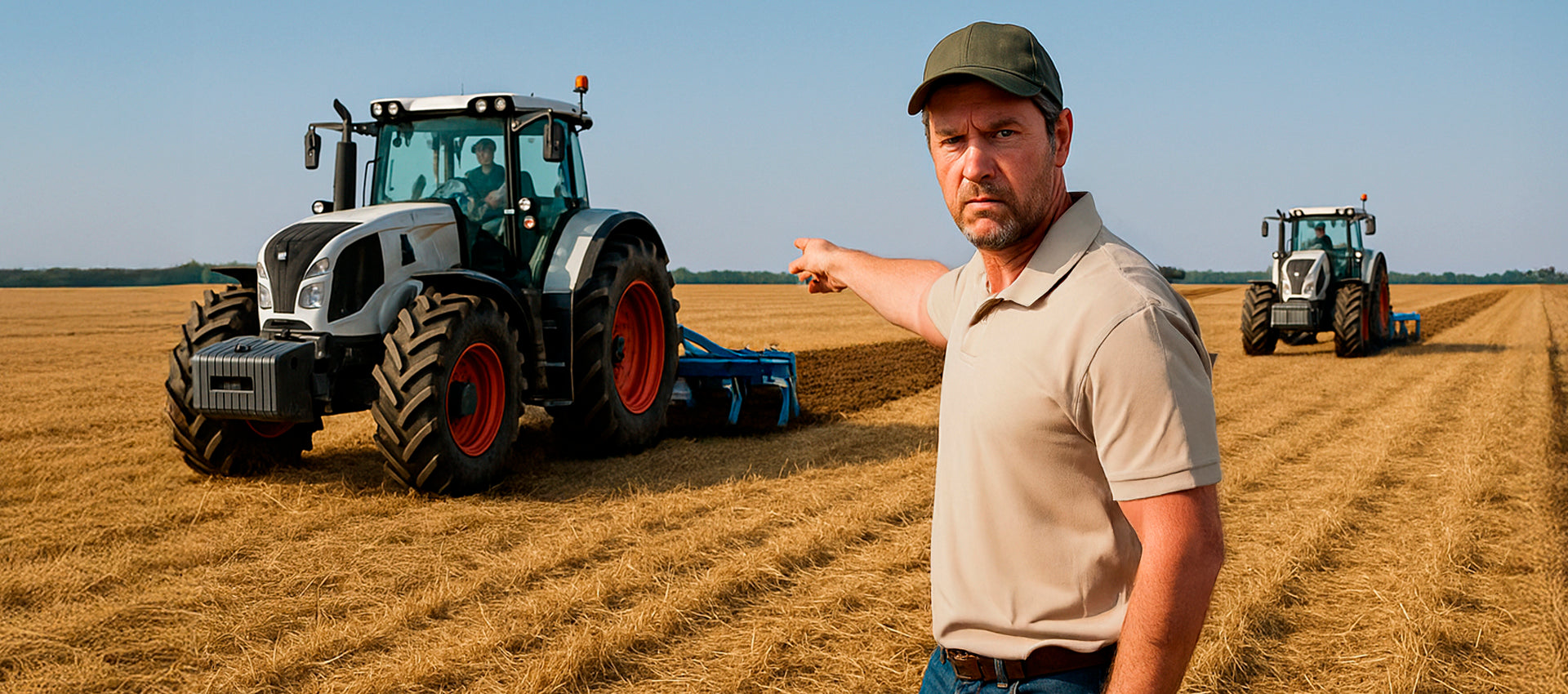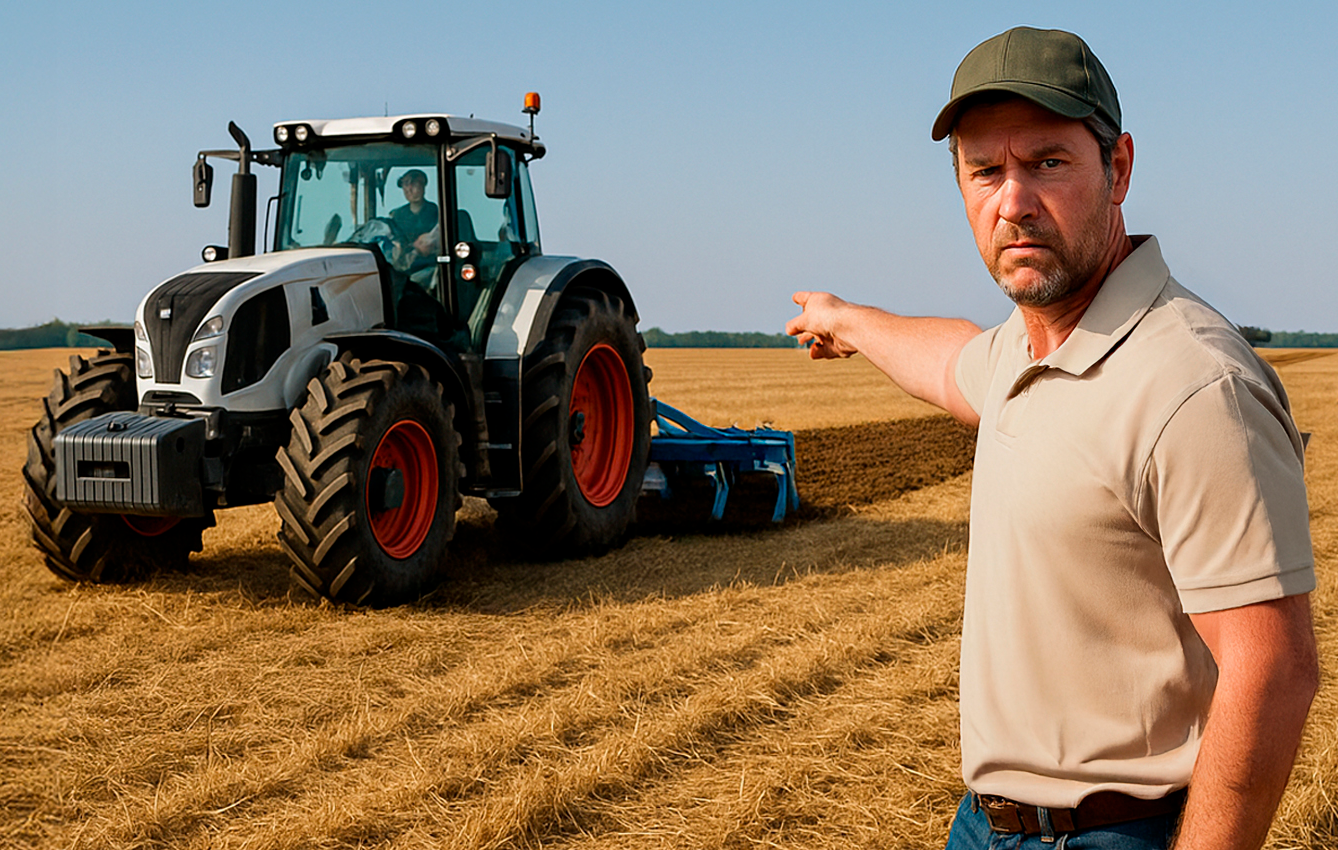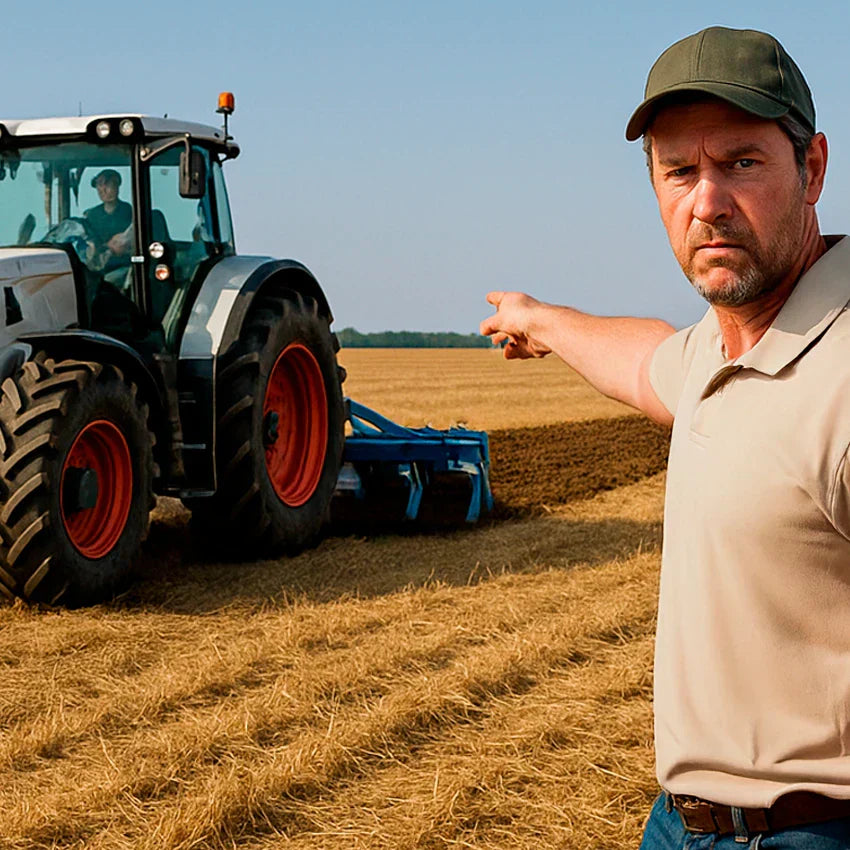Why do the same tractors have different performances?
Imagine the scene: two tractors of the same model, operating with similar tires and implements and under virtually identical soil conditions. Yet, one performs better or consumes less fuel than the other. Why does this happen? In this article, you'll understand the main reasons behind the performance differences between seemingly identical tractors.
Differences that start at the factory
Variations in tractor performance may be due to the manufacturing of engine and transmission components . These assemblies undergo standardized industrial processes with strict dimensional tolerances , which have minimum and maximum acceptable values.
During assembly, small differences in individual parts accumulate. Furthermore, there is also slight variability in the tightening torques applied during the process. The result is engines and transmissions with subtle variations in friction between moving parts , which can generate minimal differences in performance—all still within factory specifications.
Another element that contributes to this variability is the fuel injection system . Even with proper calibration, transfer pumps, injection pumps, and nozzles exhibit slight differences. Thus, one system may operate closer to the lower limit of the specified range, while another approaches the upper limit. This results in subtle but noticeable differences in performance and consumption.
These differences don't represent defects , but rather variations considered normal. Therefore, it's natural for a new tractor to deliver slightly more or less torque and power than another of the same model.

How these differences appear in dealer testing
During pre-delivery inspections, some dealers use dynamometers to measure the actual torque and horsepower available at the tractor's PTO (Power Take-Off) . These devices apply load to the engine, simulating heavy-duty field conditions, while recording its torque and horsepower response. Modern dynamometers, such as the AG.X Series from AW Dynamometer , are ideal for this type of testing, ensuring accurate and reliable measurements.
Another common pre-delivery practice is engine pre-run-in , performed for two to three hours. In this process, the dynamometer applies load to the engine, favoring the seating of the rings on the liners, reducing internal friction and ensuring that the engine reaches its maximum performance in less time than would occur with field break-in alone. For more details, see our article: "Why pre-run new engines with a dynamometer? Benefits and Recommendations."
During these tests, the dealer verifies that the tractor is within specifications and can adjust any deviations. However, since there is an acceptable tolerance range, it is normal for some tractors to be closer to the minimum horsepower limit, while others approach the maximum. Therefore, small differences in performance in the field are expected and not a problem .
The importance of correct operation
When two tractors of the same model perform similarly on the dynamometer but are operated differently , field results can vary significantly. In other words: the operator makes the difference .
A well-trained operator:
• Understand the difference between torque and horsepower .
• Knows in which rotation ranges the maximum torque and maximum power of the engine are.
• Avoid working at higher speeds than necessary.
• Uses the engine's torque reserve intelligently.
• Correctly selects gears to keep the engine in the ideal load and speed range.
Furthermore, this operator understands how the tractor's operational balance directly influences performance. He correctly performs these tractor adjustments:
• Ballast appropriate to the type of operation.
• Correct weight distribution between front and rear axle.
• Adequate drive ratio between front and rear wheels (on 4x4 tractors).
• Correct tire pressure.
When these adjustments are performed correctly, the difference in performance and fuel consumption can exceed 10% between a well-tuned tractor and a poorly configured one.
Training is essential to ensure this efficiency, and it's up to the dealer to provide it during technical delivery. To reinforce this process, some brands have started offering online courses as supplementary training, ensuring that new and experienced operators have access to the same level of knowledge. Fendt, Massey Ferguson, and Valtra make their official courses available on the Werkey platform, facilitating access to training at any time.


Differences are normal — but they can be optimized
Now you know that small performance differences between tractors of the same model are normal and not a problem , as there's an acceptable range of torque and horsepower. You've also seen that the dealer's dynamometer work is crucial to delivering a properly tuned tractor.
Finally, it became clear that operator training is crucial to achieving maximum performance with minimum consumption . This training can—and should—continue after technical delivery, through online courses available from Werkey .
If you liked this article, please share it with your clients and colleagues.
See you next time!
This article was originally published on the Torqx NEWS blog. Its author, Valter Henke, is CEO of Werkey and also serves as editor of Torqx NEWS , where he regularly contributes strategic content and in-depth analysis on relevant industry topics.










Leave a comment